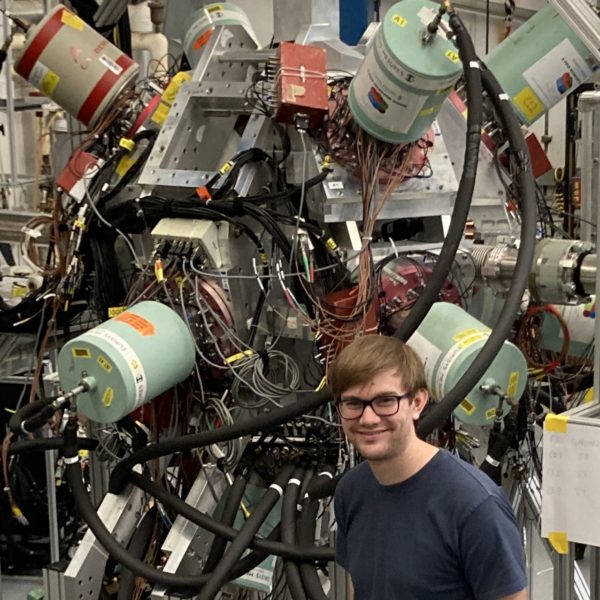
Home / Events / E2 Rotational Invariants of $0_{1}^{+}$ and $2_{1}^{+}$ for $^{106}Cd$: the Emergence of Collective Rotation
E2 Rotational Invariants of $0_{1}^{+}$ and $2_{1}^{+}$ for $^{106}Cd$: the Emergence of Collective Rotation
Presented By: Tim Gray / graytj@ornl.gov
Tim Gray started his first postdoc at ORNL just under a year ago. Tim obtained his PHD with Andrew Stuchbery at ANU and his thesis led to two awards. In the short period Tim has spent at ORNL, he has shown great promise with leadership on the new CLARION2-TRINITY array at FSU (multiple experiments and preliminary analysis complete), and analysis of several GRETINA-CHICO2 datasets, including Cd-106 for which this abstract focuses on. The present results on Cd-106 contribute to a long line of work and interest in understanding the emergence of collectivity, particularly with regards to whether nuclei exhibit low-lying vibrational degrees of freedom. Tim's results suggest that the Cd isotopes in fact show an emergence of rotational not vibrational character. These results will no doubt be of wide interest but also controversy.
Abstract
The collective structure of $^{106}Cd$ is elucidated by multi-step Coulomb excitation of a 3.849 MeV/A beam of $^{106}Cd$ on a $1.1$ $mg/cm^{2}$ $^{208}Pb$ target using GRETINA-CHICO2 at ATLAS which yielded 14 E2 matrix elements. The nucleus $^{106}Cd$ is a prime example of emergent collectivity that possesses a simple structure: it is free of complexity caused by shape coexistence and has a small but collectively active number of valence nucleons. This work follows in a long and currently active quest to answer the fundamental question of the origin of nuclear collectivity and deformation, notably in the cadmium isotopes. The results are discussed in terms of phenomenological models, the shell model, and Kumar-Cline sums of E2 matrix elements. The $⟨0_{2}^{+}||E2||2_{1}^{+}⟩$ matrix element is determined for the first time, providing a total, converged measure of the electric quadrupole strength, $⟨Q^{2}⟩$, of the first-excited $2_{1}^{+}$ state relative to the $0_{1}^{+}$ ground state. Strong evidence for triaxial shapes in weakly collective nuclei is indicated; collective vibrations are excluded.
*UT-Battelle, LLC under Contract No. DE-AC05-00OR22725 with the U.S. Department of Energy.
Download Abstract